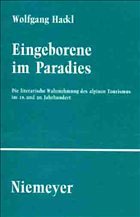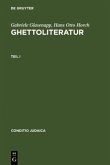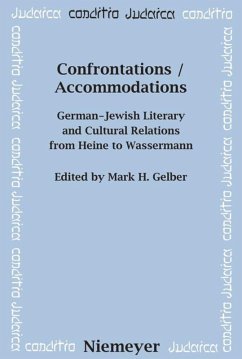Since the 18th century, literature has played a major role in the perception of the Alps as a locus amoenus. Thereafter the Alps served as a subject functionalized in a wide variety of ways for the projection of time-bound desires, feelings, or insights. In the 20th century, by contrast, interest in the Alps has been directed more specifically toward the tensions obtaining between landscape idealization and modern mass tourism. Satire, social criticism, criticism of the appropriation of this landscape by the tourist industry, and deconstruction of media enactment are the terms of reference for an analysis of relevance both for literary criticism and cultural studies.
Am Wandel vom locus horribilis zum locus amoenus in der Wahrnehmungsgeschichte der Alpen hat die Literatur seit dem 18. Jahrhundert großen Anteil. In der Folge von Albrecht von Hallers Gedicht »Die Alpen«, das als Prototyp der literarischen Alpensehnsucht diente, wurde die alpine Landschaft dabei zum sehr unterschiedlich funktionalisierten Sujet und zur Projektion zeitgebundener Wünsche, Gefühle oder Erkenntnisse, etwa bei Ferdinand Raimund, Adalbert Stifter, Johanna Spyri, Arthur Schnitzler oder Ödon von Horvath. Im 20. Jahrhundert dagegen interessieren die Alpen vermehrt als Ort der Begegnung im Spannungsfeld zwischen Sehnsuchtslandschaft und modernem Massentourismus. Literarische Bedrohungsszenarien bei Reimmichel oder Ludwig Thoma, die satirische Überzeichnung der Exotik der Nähe im Aufeinandertreffen von Einheimischen und Fremden in der Zeitschrift »Simplicissimus«, Sozialkritik und der Blick hinter die Kulissen der heilen Welt der Tourismuswerbung in Felix Mitterers »Piefke-Saga« oder in Norbert Gstreins Erzählung »Einer« sind daher genauso Gegenstand der literatur- und kulturwissenschaftlichen Analysen wie die Kritik an der Vereinnahmung der Landschaft durch die Tourismusindustrie in der Lyrik n.c. kasers, das Sprachspiel und der Sprachwitz von Ernst Jandl und Walter Pilar oder die Dekonstruktion der medialen Inszenierung bei Elfriede Jelinek.
Am Wandel vom locus horribilis zum locus amoenus in der Wahrnehmungsgeschichte der Alpen hat die Literatur seit dem 18. Jahrhundert großen Anteil. In der Folge von Albrecht von Hallers Gedicht »Die Alpen«, das als Prototyp der literarischen Alpensehnsucht diente, wurde die alpine Landschaft dabei zum sehr unterschiedlich funktionalisierten Sujet und zur Projektion zeitgebundener Wünsche, Gefühle oder Erkenntnisse, etwa bei Ferdinand Raimund, Adalbert Stifter, Johanna Spyri, Arthur Schnitzler oder Ödon von Horvath. Im 20. Jahrhundert dagegen interessieren die Alpen vermehrt als Ort der Begegnung im Spannungsfeld zwischen Sehnsuchtslandschaft und modernem Massentourismus. Literarische Bedrohungsszenarien bei Reimmichel oder Ludwig Thoma, die satirische Überzeichnung der Exotik der Nähe im Aufeinandertreffen von Einheimischen und Fremden in der Zeitschrift »Simplicissimus«, Sozialkritik und der Blick hinter die Kulissen der heilen Welt der Tourismuswerbung in Felix Mitterers »Piefke-Saga« oder in Norbert Gstreins Erzählung »Einer« sind daher genauso Gegenstand der literatur- und kulturwissenschaftlichen Analysen wie die Kritik an der Vereinnahmung der Landschaft durch die Tourismusindustrie in der Lyrik n.c. kasers, das Sprachspiel und der Sprachwitz von Ernst Jandl und Walter Pilar oder die Dekonstruktion der medialen Inszenierung bei Elfriede Jelinek.








